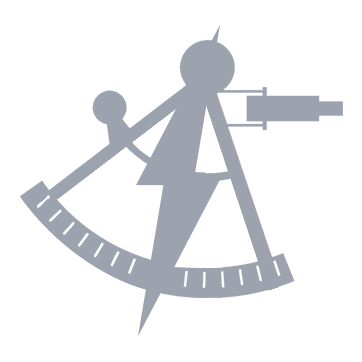Captain’s Log, Stardate 2401.11
Following over two months of work, today is the day that I will be able to certify Zeta Olympiae IV—what we’re calling Mytikas, after the highest peak on Mount Olympus—as suitable for habitation. All of the crews across Arcturus Squadron have been working extremely hard, but our work is not yet done. Starfleet Command has made this colony’s viability a mission-critical priority, so we will remain in orbit until all three thousand of the colonists are safely landed and the stability of the aerostat can be assured. There are many eyes on this project, and we will be joined by a high-ranking official of the Federation Bureau of Colonization for the final stages of the mission.
At an average height of five hundred meters by the sea up to two kilometers in the deep forests, the trees of Mytikas were so tall and so dense that their leaves appeared to be from orbit the surface of the planet itself. This forest world was punctuated of comparatively small puddles of water—its seas made up less than twenty percent of its surface, but the upper layers of the planet’s crust were porous, full with a slightly brackish but nutrient-dense subsurface ocean that fed the massive roots of the trees. Starfleet’s best current theory was that this drought-proof hydrosphere was what had allowed the trees to develop into true megaflora—and Mytikas was one of only a handful of such worlds known in the galaxy. It was a jewel—a prize that the Federation absolutely needed to take hold of in the aftermath of an event like Frontier Day.
In order to preserve the extensive biodiversity of the planet, the Federation Council had accepted a bid from Ardana to create a system of floating cities like the famed Stratos of their homeworld. The initial charter was approved for a pilot program with several aerostat habitats that would be tethered in the upper canopy of the planet-wide forest so that planetary weather patterns, the migration tracks of lifeforms, and any other hazards could be observed to optimize the design of the new city.
It was such an important and heavily scrutinized mission that Fourth Fleet Command had committed all of Arcturus Wayfinding Squadron to ensure the successful founding of the new colony. Other than the dramatic retrieval of Olympia Station from the far reaches of the Alpha Quadrant, this was the first time that all eleven ships of the squadron would be working in concert in the same system, including the newly repaired Buran. It was a complex ballet of interconnected missions as the squadron laid the floating foundations for the new colony, scanned the outer system, deployed navigational buoys and defensive platforms in orbit, and conducted in-depth away missions on the surface.
High above the treetops, the starship Achilles was inching towards the flower-like habitat platform with the last of its seven “petals” held in a tractor beam. The underside of the kilometer-long module had large lighter-than-air bladders ready to be inflated with lift gasses, as well as anti-gravity and maneuvering equipment to help keep the whole habitat stable. Above was shell-like framework that would eventually support commercial, recreational, and habitat areas. Only three of the seven segments were fully fitted out for colonists; the remaining pieces would be added later over time as viability was proven for long-term habitation. This last segment of the structure would make the new floating city ready for its first residents.
Aboard Arcturus, Fleet Captain Lancaster was watching intently as Achilles slowly moved the final piece into place. He would have strongly preferred if the structure could have been assembled in one piece on the planet’s surface, but there wasn’t any suitable location other than the tiny seas, meaning the structure had to be assembled in mid-air, which was a feat of engineering on its own. This was the culmination of a months-long effort timed down to the minute, as colonial transports were expected to arrive within the hour. With deft precision, the module was slotted into place and magnetic latches locked into place on either side.
“Stable connection,” Captain Okusanya reported from her own bridge on Achilles. “Begin inflation procedures.”
Still stabilized by Achilles’s tractor beam, the bladders on the habitat module began to inflate. Should the gravity generators fail, the city would be able to stay in the air indefinitely, though it would lose the ability to hold position. The whole proposition made Lancaster very nervous, even as someone who was deeply familiar with the physics involved. There was just something about living on a giant blimp that made him feel unmoored and queasy.
“Inflation complete. Cutting tractor beam.”
Lancaster looked on, not breathing for a moment as he waited to see if the whole thing would come crashing down. As the blue beam from Achilles ceased, the new city remained solid and stable as a rock. It was enough to make even a stoic like Lancaster let out a sigh of relief. Thankfully, Staff Captain Alesser seemed to be the only one who noticed, and it earned him a smirk.
“The city is stable. Construction complete, Arcturus,” Okuyanya said over the comm, her voice seeming similarly relieved.
“Good work. Arcturus out,” Lancaster said, resting his head on the back of the chair for just a moment as he ended the call with his thumb on the armrest panel.
That was one stage of the project, but they still had to oversee the safe settlement of 3,000 eager colonists. Despite that moment of fatigue, bringing order to the chaos of ten starships, several dozen runabouts, and nearly 6,000 crew all working together had him feeling at his most professionally serene as he had ever been in Starfleet. His inner logistician was intensely satisfied by seeing it all come together.
“Captain, starship Nellie Bly reports that they are entering the outer edge of the system with the colony transports. They’ll be here in twenty minutes,” Lieutenant Belvedere reported from the communications station behind Lancaster’s seat.
Lancaster had been working with the lieutenant closely during their mission—for the first time in a long time, Arcturus was short-handed and the fleet captain was still awaiting new staff to help him manage the squadron in addition to the ship itself. He’d often questioned the necessity for a communications department at all in the 25th century with so much automation, but Belvedere had proved to be a very useful buffer to parse out which requests could be deferred and which were truly urgent in a way that the computer couldn’t always do on its own.
“They’re requesting permission to come alongside and beam the commissioner and the colonial delegation over.”
“Permission granted, Lieutenant,” Lancaster confirmed
Even for a ship as large as Arcturus, having visitors aboard who were owed diplomatic precedence would be inconvenient during the complex logistical mission they were still in the midst of. They would want things like receptions and tours—all of which could grind the work of his senior staff to a halt. But Lancaster had a plan for providing them with the required red carpet while also keeping them out of the way of the real labor.
“Commander Bowens, have preparations been completed for the captain’s yacht?” Lancaster asked.
“Affirmative, sir. She’s fully stocked and fueled. Ready for a twelve-hour joyride around the system,” Bowens replied, with slightly more cheek than Lancaster was used to from him.
“Careful, Commander, or you’ll find yourself forcing small talk over a meal you have no interest in eating,” Lancaster retorted. As he got older, he found it more and more difficult to turn the switch in his mind to allow for diplomatic inanity. He glanced at Alesser who was looking a little too smug as well. “I have the perfect task for you and staff captain: please go to the transporter room and escort our guests to the senior officers’ lounge. Remember to amp up the charm. Starfleet’s watching this mission,” he said as he stood from the command chair. “Mr. Belvedere, with me. Mr. Marshall, you have the bridge.”
As Arcturus made ready for an evening of protocol, there were dozens of survey teams all over Mytikas, making sure that all biological hazards were properly accounted for. It would take many, many years to fully map and catalog the planet’s surface, but the efforts of ten starships working together would leave Mytikias as one of the most well-surveyed colonial outposts in the Federation. Commander Najan Osho was leading a team from Pallas at the base of one of the oldest trees in the massive forest. The forest floor was nearly pitch-black, and so the team had to rely on light beacons clipped to their wrists.
“Based on these readings, this tree is tens of thousands of years old, Commander,” Lieutenant Commander Sarcaryn reported. The Risian man touched the steel-like bark of the ancient tree. “It’s an incredible lifeform.”
“Get a room, you two,” Lieutenant Hidalgo teased, laughing at the reverence the scientist held for their locale. He sounded ready to add another quip but his brow furrowed. “Hey, I’m picking up energy readings. At least a dozen meters deep.”
“We don’t have any core probes in the area do we?” Najan asked.
“Negative,” the science officer replied. He flipped through various views on his own tricorder. “There is a significant negative mass at the center of this tree. I believe it may be an artificial structure.”
Najan sighed. Mytikas was supposed to be entirely uninhabited. Finding evidence to the contrary at the last minute would complicate their mission. It was intriguing, though, at the same time. She wasn’t expecting to get an opportunity to discover anything interesting on their survey.
“Najan to Pallas. We may have a situation,” she reported.
“Could you be more specific, Commander?” Sitar replied.
“We may have found a non-Starfleet structure on the surface. I recommend we pause the colonization effort until we can examine it,” Najan said.
“Starfleet is unlikely to approve such a delay. Acquire what information you can and keep me informed,” the captain said.
“Understood,” Najan replied before tapping her badge. “Well, you heard the captain: let’s figure out how to get inside this, uh, tree,” she ordered to her team as she stared up at the trunk of the massive and ancient organism.

 Bravo Fleet
Bravo Fleet








